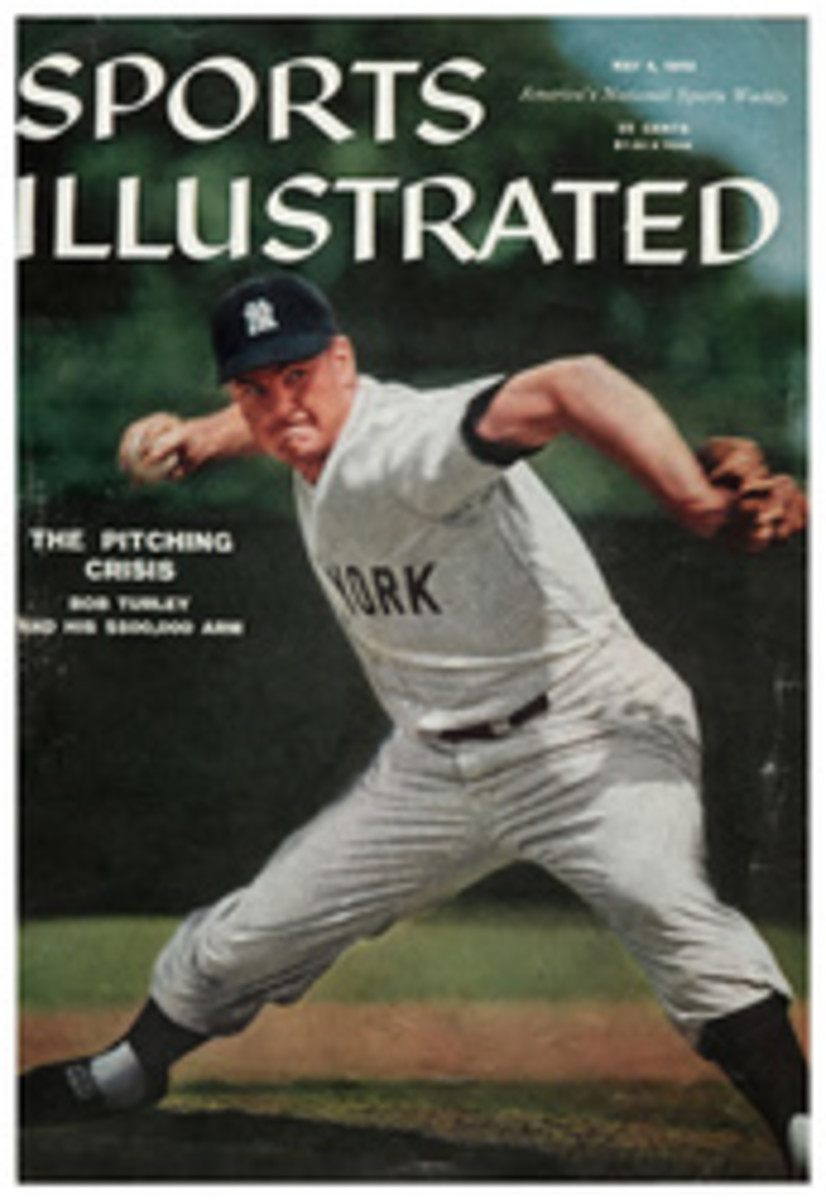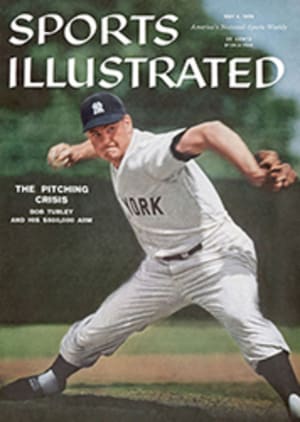
A two-act spectacular at Vegas
The garishly colored and ornamented resort-hotel nightclubs that screamingly herald the approach to Las Vegas form an unlikely setting for a golf course, let alone a major golf tournament. But the bizarre is a Las Vegas specialty, and its Tournament of Champions is a two-act spectacular which, though it certainly is not golf in the old-fashioned sense, is still quite a show.
Part One of what used to be referred to as the Slot Machine Open before it gained a certain amount of respectability is a pretournament calcutta, which this year piled up a record pool of $380,000. Part Two is the 72-hole golf tournament itself, held at the Desert Inn Country Club course just a few hundred feet from the garish glow. The entry list for the tournament is composed only of PGA tournament champions of the preceding 12 months plus, of course, the man who returns to defend his title. The entry list of those who bid at the calcutta is weeded out of a select field of well-heeled gamblers, real estate owners and big-money men in general who not only have plenty of cash but who are delighted to invest it recklessly. It's readily apparent that this year's winners—Chauncey Needham, who hit a $136,800 jackpot in the calcutta, and Mike Souchak, who shot a 7-under-par 281 to win the tournament itself, $10,000 in prize money and a gift of around $12,000 from Needham's calcutta share—bested some pretty rough competition.
Even in a town jumping with high-powered nightclub acts the calcutta auction held on the eve of the tournament is always the best show of the night. No competing golfers were allowed to be present, but jammed into the flossy Painted Desert Room at the Desert Inn were 450 potential high spenders, plus Bob Hope, Bing Crosby, Phil Harris, Jimmie Durante and Joe E. Lewis, while red-faced, white-haired Walter Winchell kept a beady eye on the proceedings in his role as director of the Damon Runyon Cancer Fund for whose benefit the calcutta and tournament are held.
The structure of the calcutta is relatively simple. When the entire field (26 this year) has been auctioned off, 10% of the total pool is donated to the Damon Runyon Fund, and the rest is parceled out for delivery at the close of the tournament in this fashion: 40% to the winning ticket, 20% for second, 15% for third, 10% for fourth and 5% each for the fifth, sixth and seventh places. This year's pool amounted to $342,000 after the deduction for charity, and first place paid a staggering $136,800. Even the seventh-place ticket was worth $17,100.
Anticipating this fat pot, potential buyers fingered their checkbooks and money clips, and at 9:30 p.m. Auctioneer Milt Wershow glided on stage to start the ball rolling.
"There's Crosby," said Wershow, as he started to warm up the crowd. "What club are you representing, Bing?"
HOPE BOUNCES
"Fort Knox," bellowed Bob Hope before Crosby could drawl a response, and the audience roared.
Finally getting down to business, Wershow auctioned off Gary Player, who went for $16,500, and Billy Casper, who drew a top bid of $21,000. Crosby ambled up to the stage to sell U.S. Open Champion Tommy Bolt for a modest $12,500, and then Hope bounced up to raffle off Arnold Palmer.
"Well, here we are at the Desert Inn's annual benefit for Frankie Laine," said Hope. "I'll tell you, if I ever bought a winner in this thing I'd breed him." The bidding on Palmer reached $19,000 and stalled.
Hope was followed on stage by Durante, Joe E. Lewis, Phil Harris, Tony Martin and even well-fortified Dagmar in platinum-blonde hair and plenty of pancake makeup. But the most effective auctioneer of all was Ray Bolger, who skipped the humorous patter and concentrated on the hard sell. Bolger raffled off Billy Maxwell, Marty Furgol, Mike Souchak and Dow Finsterwald, a group of distinct long shotters, for a total of $54,500. At the halfway mark the pot was worth $176,000, well ahead of the record pace; and when Howie Johnson was sold for $9,000 the old mark of $266,000 had been topped, with six names still to go. Chauncey Needham, a retired San Francisco lumberman who has always held a share in each of Crooner Frankie Laine's three winning Littler syndicates in past tournaments, also led his own syndicate and bought Souchak for only $14,500. Littler again went to Laine for a record price of $26,000; and favorite Art Wall went to Yale Kahn, a wealthy restaurant and real estate operator from San Diego, for $25,500.
On this expectant note the tournament chugged into gear with Souchak running out a first-round 66 to take a two-stroke lead. The golf course, laid out over desert sand in 1952 at a cost of $1 million, is hard, and the ball rolls a long way after it lands. But the fairways are extremely narrow, the bordering rough extremely deep, the greens hard and fast. Souchak's round was therefore very competent, as the tournament record of 275 for four rounds clearly shows.
On the second day a 20-mph wind snapped around the course to push shots in all directions and raise up great swirls of gray-white dust far out in the surrounding desert. Souchak, who came to Las Vegas in a confident frame of mind and on a diet that had brought his weight down 20 pounds to 200 in the last few months, shot steady golf despite the wind, and his 2-under-par 70 gave him a halfway lead of four strokes.
In addition to wind and rough, another mental hazard arose. There is no distinction between nighttime and daytime in Las Vegas, as the always-crowded gambling casinos operate 24 hours a day. If it gets dark nobody notices. Their pockets jingling with silver dollars, crowds of spectators would stroll down to watch some golf between sessions at the crap, blackjack and roulette tables. As these galleries moved up and down the fairways the noise of chinking coins was a steady murmur—like chains being shaken out on a cement floor.
Playing to the accompaniment of this gentle, metallic music, Souchak scored a third-round 68 to set up a final-day race with Art Wall, coincidentally a roommate of Mike's when both attended Duke University. Souchak was driving the ball vast distances off the tee while still keeping it in the fairway. On many of his tee shots he was clubbing the ball out some 350 yards or more. There is no par-4 hole on the Desert Inn course of less than 404 yards, but it was seldom that Mike was reaching the green with anything more than a drive and a little chip or wedge. He carried to the apron of the green on the 554-yard fifth hole with a drive and a five-iron. He was just 20 feet short of the putting surface on the 501-yard 15th hole, with two good woods dead into the wind. On the 17th his drive reached out a full 370 yards. Doubtless, with a little better luck on his chipping and putting, Souchak's score could have been even better than his 66 on the first day and clinched the tournament then and there. But he was still five strokes up on Wall, while Art was five strokes up on the rest of the field.
And it appeared again as if Wall, whose adrenal glands start working feverishly when he is playing in the final round of a golf tournament, might come sailing up from far back and win this event just as he had won the Masters. Playing in the twosome just ahead of Souchak, Wall narrowed the margin to one stroke at the 11th hole. But on the 14th green his first putt from 40 feet hopped past the hole by nine feet. He needed three more putts to get down. As a result, Wall's second-place finish was worth $5,000 to him and $68,400 to his calcutta backers. Meanwhile Gene Littler slipped into third place and returned Laine, Needham and Los Angeles Oilman Don Frankel $51,300 on their investment, thus paying a dividend for the fifth straight year.
For Souchak, his stay in Las Vegas was extremely profitable in all but one respect. Staying away from the crap and blackjack tables, he still managed to blow $2.75 at the slot machines. But even in this department he was way ahead of almost everybody else.
PHOTO
AUCTIONEERS STAND PROUDLY BY THE BOARD SHOWING BUYERS AND PRICES FOR EACH GOLFER; $380,000 TOTAL IS NEW RECORD
PHOTO
BOOMING drives such as the one Souchak hits here often went more than 300 yards.

